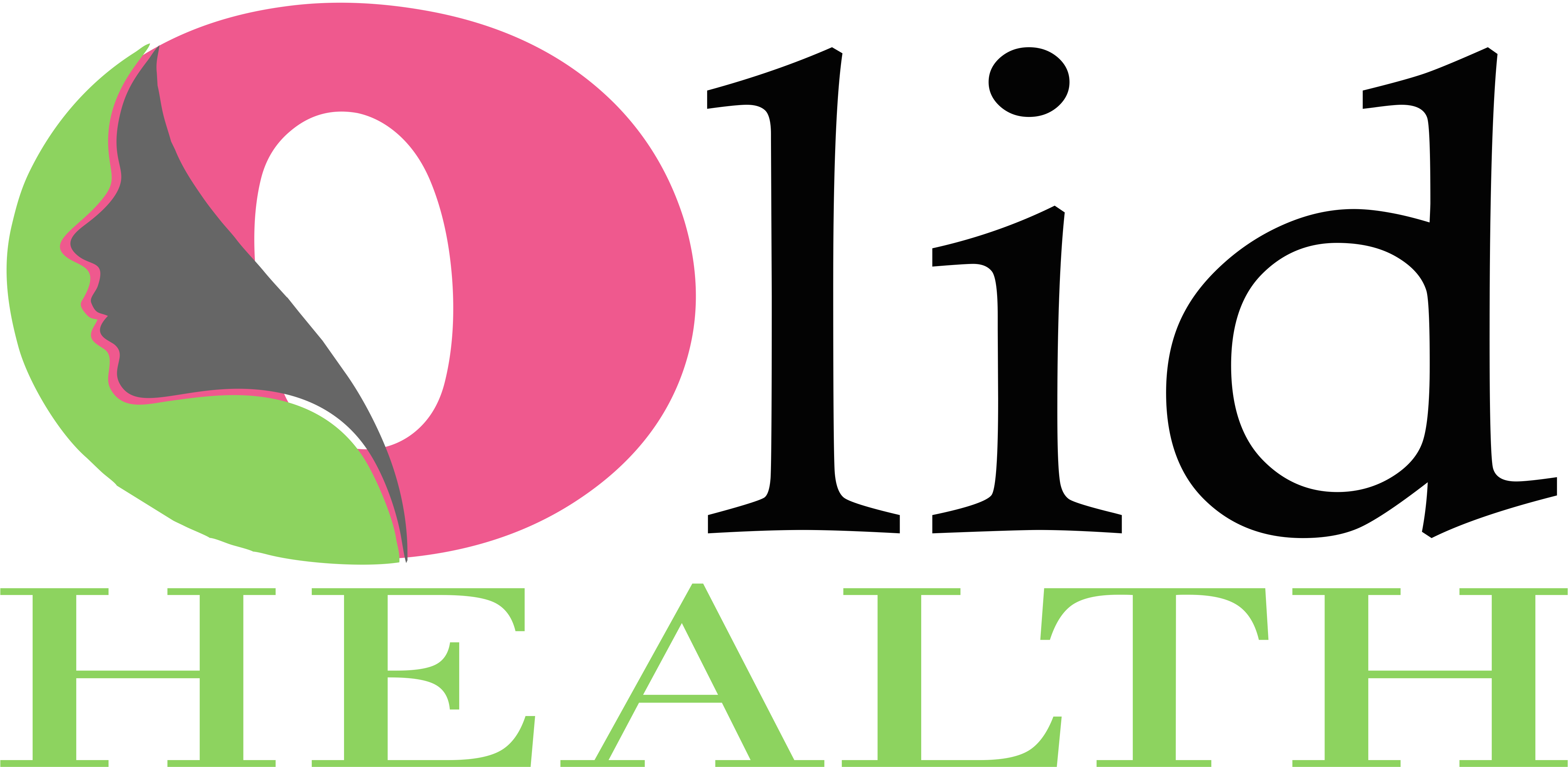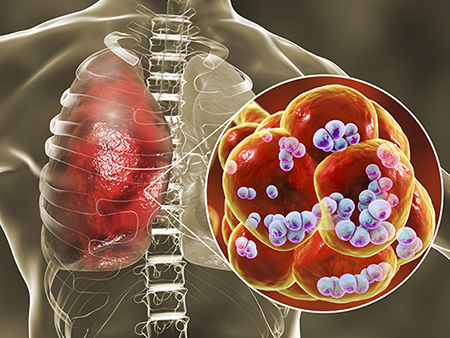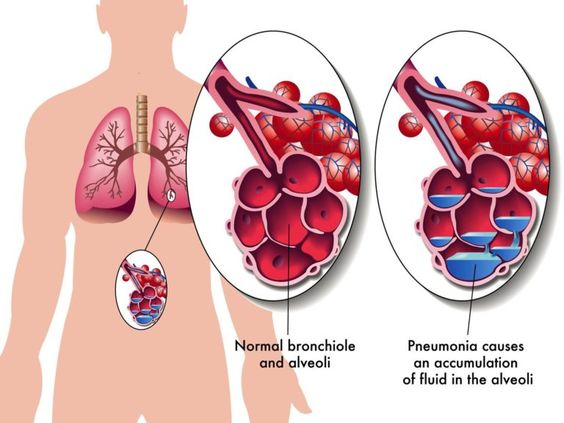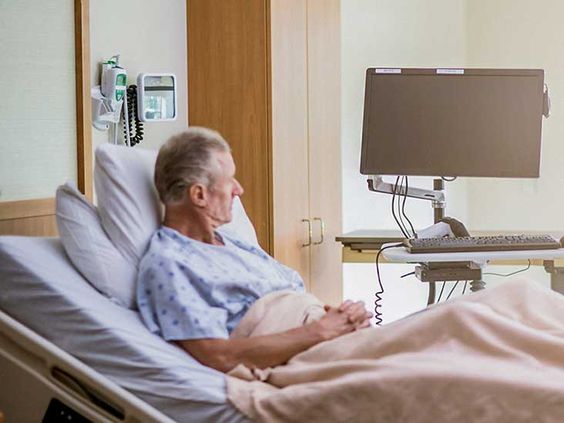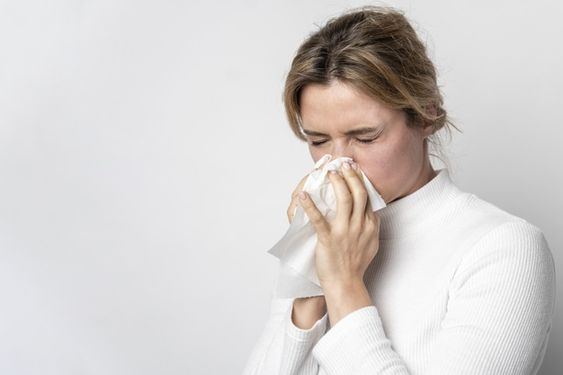Olidhealth.com – During this pandemic, we are vulnerable to getting sick because of stress or a bad lifestyle that can lower the immune system. The malicious microbial or substance could be lodged in the lung and causes a bad effect in our body. One of the most common diseases that infiltrate the respiratory system is pneumonia.
This disease commonly affects people in the US and other nations. However, the pandemic inflates the growth of pneumonia disease and other disorders that are related to a lung illness. The typical symptom of pneumonia such as coughing and fever.
How to diagnose pneumonia? Well, there are several ways to know that. Firstly, you can self-diagnose by comparing with symptoms like coughing and fever. If you feel the symptom is getting worse, you should check with a doctor and take certain tests to know further detailed information about the causes of pneumonia in your body.
Here we show you the general definition of pneumonia including causes, risk factors, and symptoms in order to prevent the development of this disease before it happens.
What is pneumonia?
Generally, pneumonia is an infectious disease that affects to lung or respiratory system. This disease is primarily caused by viruses, bacteria, or fungi that infiltrate into the body via unsanitized water, pollution, or being infected by other patients with pneumonia [1]. It has various symptoms depending on its infections.
For instance, this malicious creature can inflame your respiratory tract or fill the sacs with mucus within the lung. Even some cases, the buildup of fluid or mucus could reduce lung function to take oxygen into the body. Recovering pneumonia may take a long time depending on antibody and nutritious intake to fight back this disease.
What causes pneumonia?
Knowing the causes of pneumonia is important to track the strain and decide the best treatment at a later time. According to the expert, there are 3 main causes of this disease such as bacteria, viruses, and fungi. We describe the causes below for more information.
Bacteria
The first one is bacteria since it was commonly causing pneumonia. However, bacterial pneumonia is more deadly than other variants of pneumonia. It usually has symptoms such as coughing and fever in long term. In the worse cases, the bluish color in lips may occur due to a lack of oxygen.
Pneumonia bacterial can be divided into two categories. The first is known as typical that has common symptoms and atypical that has a slightly different and mild symptom.
Typical bacterial pneumonia
Commonly, people are infected by this one where they would have common symptoms such as fever, cough, and muscle ache. in serious cases, we must go into the hospital.
- Streptococcus pneumoniae – This bacteria is common in the United State and known as pneumococcus bacteria. It can infect at all ages especially adults and later age are more prone to it.
- Haemophilus influenzae – Although this type of bacteria can cause pneumonia, it’s not the same as flu disease. It is also one of the most common causes of pneumonia. However, it also leads to other illnesses such as Epigliotittis (cause inflammation in the throat), meningitis (inflammation in spinal cord or brain), cellulitis (infection in the skin), or bloodstream infection in severe cases.
- Moraxella catarrhalis – It can lodge unnoticed for a long time within the respiratory tract. It’s waiting for the body in a weakened state and would infect other organs such as the ear or sinuses. Normally, it is infected to children that have developed immune systems.
Atypical bacterial pneumonia
This type is also known as ‘walking’ pneumonia since it has mild symptoms. However, the infection range time is vast and can cause sinuses infection. To treat this is also different than typical bacterial pneumonia.
- Mycoplasma pneumoniae – This bacteria causes atypical pneumonia symptoms such as earache, sore throat, and sinuses problem. It also could be called walking pneumonia since it doesn’t have an early infection sign.
- Legionella pneumophila – This bacteria can trigger severe pneumonia symptoms and lead to legionnaires disease. Even so, it’s a rare case of people being infected with this bacteria since it is lives in contaminated water, and boiling the water could kill it.
- Chlamydophila pneumoniae – It also has another name called the Taiwan acute respiratory. The common causes of pneumonia in adults as well the children too. However, people who have this bacteria may doesn’t have pneumonia symptoms.
Viruses
This infection is as dangerous as bacterial pneumonia if we linked into its symptom such as feeling tired and weak, cough, fever, and muscle pain. Moreover, in this pandemic era, viral pneumonia has more common than other kinds of pneumonia disease. Here are a few types of viruses that harm the lung and could lead to pneumonia disease.
- Rhinovirus – Influenza virus is one of the rhinoviruses and known causes of flu illness. This virus is common in adults but adolescents are also vulnerable to this type of virus. Untreated flu can lead to serious symptoms of pneumonia such as hard to breathe and high fever.
- Respiratory syncytial virus (RSV) – The most common viruses that affected children and adolescents. This virus also can fast-spreading among children by uncovered sneezing or coughing. A healthy lifestyle such as washing the hand and covering sneezing can reduce its spreading.
- Coronaviruses – This new novel virus also called SARS-CoV-2 and contributes to making novel coronavirus-infected pneumonia or we call it COVID-19. Pneumonia caused by this virus can be severe and causes low oxygen levels. Moreover, the fluid caused by this virus is flooded the air sacs that leading to respiratory failure in some cases. For this reason, some companies try to make a vaccine to lower the risk of this disease.
Fungi
This type of infection is prone to people that have an immune problem such as HIV/AIDS. Weaken immune system caused by long-term uses of certain medication is also vulnerable to have this infection. However, fungal pneumonia is classified as a rare case unless having impaired immune system or elder people that more than 65 years.
For example, Pneumocystis jirovecii is fungi that cause a disease called pneumocystis pneumonia that have mild symptom of pneumonia. Coccidioidomycosis or known as valley fever also typical fungi in the US especially in California that could lead to pneumonia if untreated. Other types of fungi such as aspergillus and cryptococcus are common in the US that causes pneumonia when it is accidentally inhaled.
Risk Factor of Pneumonia
Though the main causes of pneumonia are infected from malicious bacteria or viruses, there are also other causes that increase the risk of this disease happening in your body as follows:
- Age – Pneumonia has a high risk to people with older age (65 or later) since they have a lower immune. Infant and children who have younger age than 2 years are also susceptible to this disease because their premature respiratory system can’t defend against this illness.
- Environment – This factor depends on how much do you spend your time in that area. If your work is related to mining, you have to pay caution against this disease. Mining area generally has toxic gas that can inflate the risk of pneumonia. People in hospitals, prisons, shelters, and military barracks also have a higher chance of getting lung-related diseases.
- Lifestyle – This is a common factor that can defend your body against disease especially pneumonia. A bad lifestyle such as smoking and using alcohol or drug would weaken antibodies and lining of the respiratory tract. Changing this habit will help to lower the risk factors of pneumonia. A healthy lifestyle and maintaining sanitation are good examples to provide protection against this disease. Eating high antioxidant food like dates palm and dragon fruit may prevent pneumonia.
- Medical condition – People with certain conditions are also prone to this illness, especially have recent lung diseases such as asthma and cystic fibrosis. However, other diseases also risen the risk of pneumonia including stress disorder, brain-related disease, diabetes, and impaired immune disorder like HIV/AIDS.
What is Pneumonia Symptom That May Happen?
If you get sick by this disease, it could make some symptoms such as cough and fever. In some cases, various bacteria and viruses may have different symptoms but generally have the same condition. There are symptoms of pneumonia that may arise as follow [2]:
Persistence cough
Almost every type of pneumonia is experiencing uncontrollable coughing and sneezing since it is important to flush out excess mucus or phlegm. The color of the mucus can be variant like yellow, white, green, or brown mucus that can be a tip-off of the type infection and noticing pneumonia progression in a patient.
Hard to breathe
These symptoms are fairly common since the sacs are filled with mucus and clogged nasal passage make it worse. To improve your breathing, try a better position and cough to release phlegm that clogged your air sacs.
Fever
This is also a common symptom of pneumonia besides cough. However, pneumonia could have no fever like atypical bacterial pneumonia. In mild to a serious conditions, it feels chills and has uncontrolled sweating. Wiping the body with a lukewarm towel could help relieve this symptom.
Nausea
This symptom is troublesome to adolescents and children because it leads to vomiting and prevents them from taking any medicine. Adult also may have this symptom but it rather mild case since adults have more resilience for this symptom.
Chest pain
Inflammation in a tube or respiratory tract could harm the lining and have bloody mucus. It feels like stabbing if it comes together with coughing.
Fatigue and weakness
To more extent case, pneumonia would reduce your muscle strength and make muscles ache in various parts of the body. The oxygen can’t be distributed normally and make some muscles have oxygen deficiency since the main organ is prioritized first to have oxygen supply.
Headache
Normally, this symptom comes together with fever and cough. However, In serious cases, inflammation in the spinal cord or brain caused by pneumonia could make severe pain and lead to meningitis.
Anosmia (for COVID-19 infection)
If you have excess mucus in your nasal passage, you will hardly breathe. This condition also reduces its smelling function and affected lowering your appetite because you can’t savor the food. In some cases, the patients that having pneumonia caused by COVID-19 also have severe anosmia even though they don’t have clogged mucus in the nose.
Ageusia (for COVID-19 infection)
Lack of smelling is also linked to a lack of taste in your tongue. It also leads to loss of appetite since it can’t smell and taste anything they consume. People with pneumonia caused by COVID-19 have this symptom.
How To Diagnose Pneumonia
Assuming that you are having pneumonia, you could have self-diagnosis first and compare the symptom that you have now. If you are sure that you have pneumonia symptoms, the next step is going to the nearest doctor to treat this disease.
Before treating pneumonia, The first thing doctor does is examine recent health histories such as travel, surgery, and illness history. This is crucial to determine your health condition. It is really helping to prevent and track another case of pneumonia. There are also following tests that can reveal the status of your body if you have pneumonia disease.
- Sputum test – The doctor needs a fluid sample from your lung. Deep coughing may excrete some fluid that can determine if there is some strain of pneumonia infection.
- Blood test – This test is commonly used to find out if the infection has been spread into your bloodstream or not. For instance, Haemophilus influenzae is a kind of bacteria that may be detected in the blood if you have severe pneumonia disease. However, it is not a reliable test since the bacteria can be varied and need further examination to pinpoint the type of pneumonia.
- Chest X-ray – The picture can tell the organ, tissue, and bone condition. It also could show the development of pneumonia indicated by brushed white in the lung area. However, the doctor can’t tell what kind of infection it is.
- Pulse oximetry – The machine is used for this test called a pulse oximeter to observe the amount of oxygen in your body since pneumonia can reduce your oxygen level. The doctor will clip on the machine to your finger and it is painless to take this test. The sensor detects the oxygen amount in your body to determine if you have severe pneumonia or not.
A Further Test to Determine The Type of Pneumonia Infection
If you definitely have pneumonia and have severe symptoms of it, there are also test that should be done to know how far the progression of this disease such as:
- Bronchoscopy – Take small tissue from the lung.
- Blood gas test – Measure oxygen level using a blood sample.
- Polymerase chain reaction test or PCR – This test to find out DNA gems via lab test.
- Computed tomography scan or CT scan – It is more detailed than a chest X-ray.
- Pleural fluid culture -Take a fluid sample from the pleural area to check bacteria infection.
The following tests are important to know which type of pneumonia you have. False diagnosis can occur if the patient doesn’t cooperate with the doctor and incidentally make the wrong medicine [3]. Each pneumonia type has specific antiviral or antibacterial medicine to fight back the disease. So, the best you can do is honest and follow the instruction from your doctor.
Conclusion
Pneumonia is a condition that the respiratory system is infected by bacteria, viruses, or fungi. The cause and risk factors of pneumonia are vast and the treatment can vary depending on its type of infection. For example, COVID-19 has different symptoms than common pneumonia. In severe cases, It could lead to a respiration failure since excess mucus is flooding air sacs and blocking oxygen intake.
Knowing the symptom related to certain causes of pneumonia are important for the doctor to determine which appropriate medication for a certain type of infection. The false diagnosis makes medication goes wrong and doesn’t have an effect to fight the disease. For that reason, be honest with the doctor and follow its instruction.
Healing pneumonia can be tiresome because it has a long period of treatment. Be patient to fight this disease if you are having it right now. Slowly but surely the doctor will treat you well to overcome this disease. Furthermore, consume the medication that is given to you completely because if there is leftover medicine, pneumonia may relapse sometimes.
Maintaining your body with high antioxidant food may help you stay healthy because it can fight back bacteria and virus infection. In addition, taking vaccination to prevent this disease and help strengthen your immune before your get infected with this disease.
Reference
[1] https://www.ncbi.nlm.nih.gov/books/NBK526116/ – Definition, and causes of pneumonia
[2] https://www.ncbi.nlm.nih.gov/pmc/articles/PMC6527561/ – Pneumonia symptom by clinical research
[3] https://www.ncbi.nlm.nih.gov/pmc/articles/PMC5471962/ – Clasification of pneumonia

